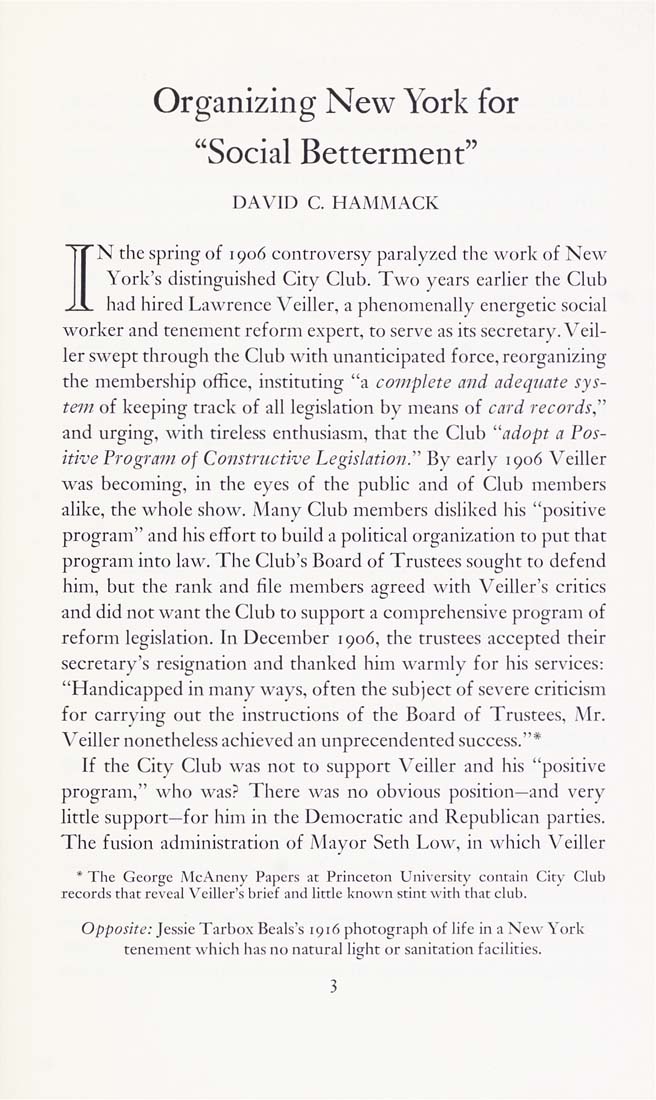Columbia Library columns (v.32(1982Nov-1983May))
(New York : Friends of the Columbia Libraries. )
|
||
|
|
|
|
| v.32,no.1(1982:Nov): Page 3 |

Organizing New York for "Social Betterment" DAVID C. HAA-IMACK IN the spring of 1906 controversy paralyzed the work of New York's distinguished City Club. Two years earlier the Club had hired Lawrence Veiller, a phenomenally energetic social worker and tenement reform expert, to serve as its secretary. \'^eil- ler swept through the Club with unanticipated force, reorganizing the membership office, instituting "a complete and adequate sys¬ tem of keeping track of all legislation by means of card records," and urging, with tireless enthusiasm, that the Club ''adopt a Pos¬ itive Program of Constructive Legislation." By early 1906 Veiller was becoming, in the eyes of the public and of Club members alike, the whole show. Many Club members disliked his "positive program" and his effort to build a political organization to put that program into law. The Club's Board of Trustees sought to defend him, but the rank and file members agreed with Veiller's critics and did not want the Club to support a comprehensive program of reform legislation. In December 1906, the trustees accepted their secretary's resignation and thanked him warmly for his services: "Handicapped in many ways, often the subject of severe criticism for carrying out the instructions of the Board of Trustees, Mr. Veiller nonetheless achieved an unprecendented success."* If the City Club was not to support \eiller and his "positive program," who was? There was no obvious position—and very little support—for him in the Democratic and Republican parties. The fusion administration of Mayor Seth Low, in which \^eiller * The George McAncny Papers at Princeton University contain City Club records that reveal Veiller's brief and little known stint with that club. Opposite: Jessie Tarbox Beals's 1916 photograph of life in a New York tenement \\'hich has no natural lisht or sanitation facilities. |
| v.32,no.1(1982:Nov): Page 3 |







